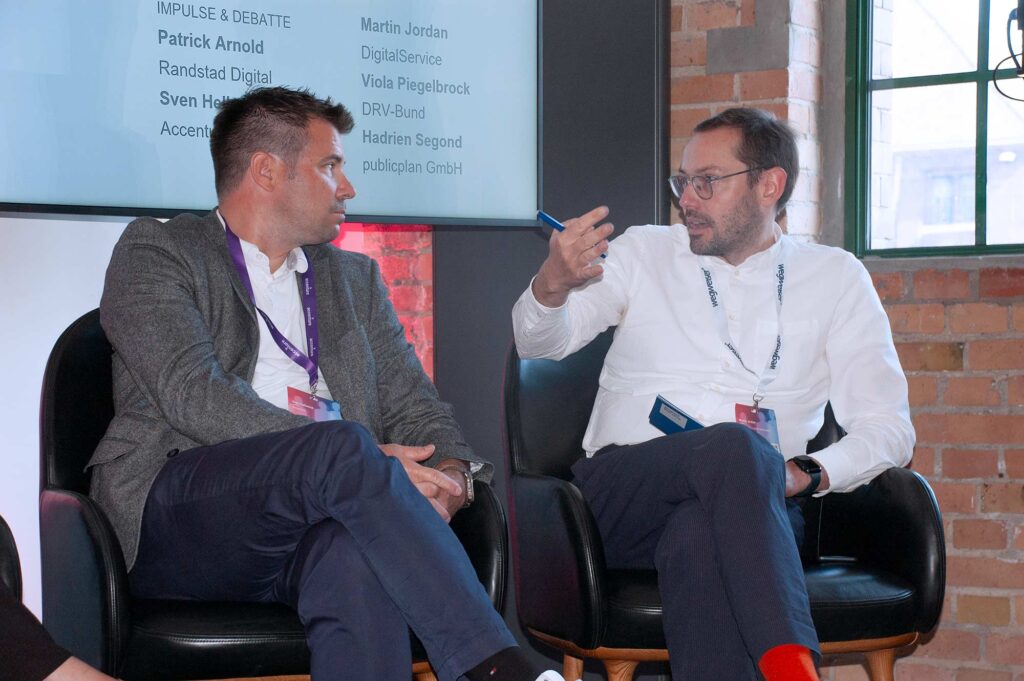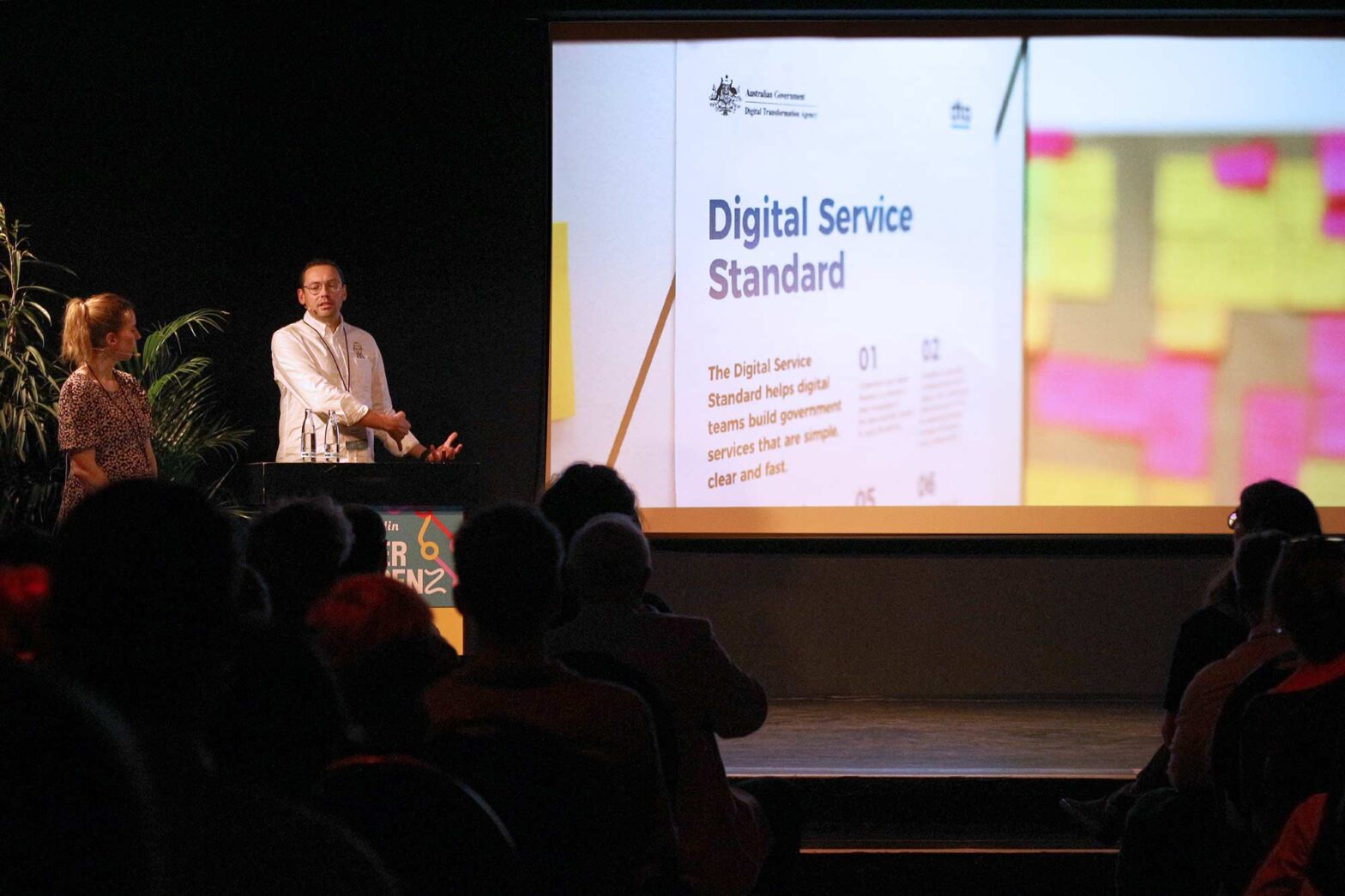This week, Germany’s Service Standard turned 4!
So, I unearthed the tweet from 25 June 2020 in which Federal CIO Markus Richter introduced the German version of an internationally recognised quality working standard for public services. I also reviewed the coverage and recognition the Service Standard received across the German public sector in the following days and weeks.
It’s noteworthy how people perceived it then: Some were impressed by its progressiveness. Others thought it was too far removed from the public sector’s antiquated working practices to effectively connect to operational reality.
As discussed many times, the Service Standard has never been mandatory. So, government ministries and agencies, the digital service teams they set up and the suppliers they hired never had to use it. Most of them don’t even know of it, or they actively ignore it, even though it could broadly lift the quality of German public services.
Telling people the Service Standard is coming to their door
That is all about to change. A mandatory Service Standard for Germany is on the horizon. Since the updated Online Access Act was enacted in Parliament 1.5 weeks ago, there is a 2-year timeframe for introducing a statutory instrument that makes the Service Standard a proper standard. This should be a game-changer.
That is the narrative I keep building and placing where I go now.
I started adding a slide to talks back in March that mentions the parliamentary recommendation for a decision to slide decks. And I mentioned it on stage this week twice.

I participated in a panel discussion on Wednesday morning at the Zukunuftskongress (literally: ‘Future Congress’). It discussed “What comes after the Online Access Act? Operating and business models for the future of public IT services”. Of course, I dropped the Service Standard, but before I could do so, the moderator, Zehra Öztürk, did it already.
It was an amicable discussion with the other panellists, two from the public sector and two from consultancies, who all highlighted vital aspects of getting digital service transformation right. I talked about the invisibility of some civil servants’ skills because of job titles, related in-house capability-building, a whole-service view supported by cross-silo collaboration, and overcoming project thinking in government.
In panel discussions like this and talks like the following day at the CityLAB Summer Conference at Berlin’s Alexanderplatz, I’m trying to radiate optimism. Because, genuinely, I could not be happier about this development of a mandated Service Standard. Finally, there is the chance to raise a unified quality bar for public services here. Government bodies would know what to look for when selecting a supplier or building internal teams. Digital outcome providers would have a reference point for working in a user-centred, iterative, data-driven way.
At the CityLAB Summer Conference, Caro and I gave our usual two-part spiel. I introduced the Service Standard, which most people still don’t know, and Caro discussed its practical application in the context of justice services. This time, we only had 15 minutes; we spent 17.
For the first time, people queued at the end of the talk for posters. Almost 20 people wanted to pick up a poster, and, for the first time, we ran out. Before, I had to take them back home.
As a side note: It was our last public delivery of a now well-iterated talk. Caro and I started giving the talk at the Smart Country Convention in November, continued at Digitaler Staat Online in December, and then gave it again at the in-person version of Digitaler Staat in March. Afterwards, we travelled to Sachsen-Anhalt on the invitation of the Ministry for Infrastructure and Digital in March, talked to the user-centricity learning cluster of the Digital Strategy at the Federal Ministry of Transport and Digital Infrastructure in April and did 3 rounds at a citizen-friendly welfare state event of the Federal Ministry of Labour and Social Affairs in June. That’s 7 different stages we conquered together and quickly found our groove together. I think we got our message across and can comfortably retire our specific story arc.
I’m confident we will soon have new stories to tell about the German Service Standard. For justice services, there is equally plenty to say about the various services coming and versions of the emerging service platform shaping. It’s been a joy doing this with Caro over and over again – crafting it, refining it and scaling it down to a 5-minute version and up to a 50-minute variant.
Recording what worked elsewhere
We have seen the remarkable impact of similar strong quality standards worldwide. Hundreds, if not thousands, of digital public services have been developed according to similar standards in the UK, Australia, Canada, New Zealand, Cyprus, and other places. The UN and OECD have also created similar standards for good services after they saw their impact and value.
Our international #GovDesign call number 34 is on. For the 3rd time in 4 years, we hear about international #ServiceStandard versions, their applications, and support mechanisms in different places. We have 39 people from different time zones and around the world joining us, including 🇪🇸🇩🇪🇨🇦🇬🇧🇨🇭🇸🇬
— Martin Jordan (@martinjordan.com) Jun 24, 2024 at 17:20
[image or embed]
On Monday evening, I co-ran an international call on Service Standards, the third on the topic. With some 40+ attendees, we heard from Andy and Kerry about the work at the Department for Education in the UK. Ignacia talked about what she had developed with the Municipalidad de Maipú in Chile. The call was excellent. Again, there were nuances I had not heard before. So, I will revisit the recording. And I already told people that a fourth call on the topic is on the horizon. I need to understand what Cyprus and Scotland are doing. Theo and Clare were too busy or unavailable for the date to tell. I also learned about some Service Standard applications locally in Spain and Greece during the call. I want to find out more.
At the beginning of the week, I finished and submitted a contribution to Service Design Network’s Touchpoint journal on Service Standard’s role in bringing new capabilities to public service development. The submitted version is 1,210 words long. I did not max out the 1,100 to 1,400 word range. I was just too tired, and it felt right. There are two feedback rounds set so that I might rewrite sections later.
Discussing success metrics at a lunch and learn
On Monday, I got a bit too pushy, maybe. Clara, Stephanie and I had a lunch and learn slot put on everyone’s calendar for some weeks. But we had not created any content for it. I urged everyone in our Monday morning session among the heads of delivery to skip the session but run it:
“Metrics and how we measure service transformation impact”, the title said. And my quickly penned description went on: “What do you measure in your daily work? What are the metrics that are most relevant to our projects? How do we measure the impact of our service transformation work? In an interactive lunch-and-learn session, we’ll discuss these and other questions. We’ll bring examples from projects, anchoring reference points and questions for further discussion.”
We hashed out the content for the input in two short and effective prep sessions on Monday and Tuesday.
We argued that metrics are relevant on multiple levels, and at Digital Service, we already have multiple anchors and reference points for metrics. We mentioned how product metrics are defined in our organisational goals, how the Service Standard demands success metrics in its points 18 and 19, and referenced our delivery principles that ask teams to define success metrics in principle 4.
We need metrics to ensure product success and measure transformation. Along 4 examples from services we have developed, we illustrated the different roles of metrics as follows:
- Metrics to improve offerings
- Metrics to measure the impact
- Metrics to prioritise roadmaps
- Metrics to capture the actual problem
Zooming out, I referenced Dilan’s excellent work at GDS on measuring the value of service transformation. And while talking about service-specific metrics in our space, I also referenced the blog post on how service-specific performance indicators can improve a service I put together under Clifford’s name.
Despite our late content creation and notification, about 50 people in the organisation were interested. After our input, we were curious about questions, thoughts, and perceived barriers to measuring things effectively. People asked us for follow-up topics, and we plan to run at least two more related events in the coming months.
What’s next
I’ll attend a two-day leadership offsite on Monday and Tuesday in Berlin’s first crematorium, Silent Green. It’s a terrific location. Digital Service ran a fellowship closing event there with 400 people. I have also been to design conferences and concerts. This time, we will only have the upstairs meeting space.
On Wednesday, I will attend a justice service platform workshop at the Federal Ministry of Justice. On Thursday, I will spend the afternoon at the Federal Ministry of Transport and Digital Infrastructure for a network gathering of the Digital Strategy lighthouse projects.
If everything goes well on Friday, I’ll take the day off to recoup some over hours.

